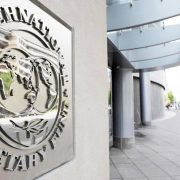What the January Barometer predicts for the PSE

Historically, January is the best month to be invested in stocks in the markets around the world because stocks in general yield higher returns during this period.
One commonly cited explanation for this so-called “January Effect” phenomenon is the tendency of stock prices to go up after the tax loss selling activities in December. Another factor contributing to this phenomenon is the renewed optimism among investors, approaching the new year as a fresh opportunity to make strategic investment decisions.
The January Effect has been closely associated with the “January Barometer,” which suggests that the performance of the stock market in January can forecast its overall direction for the entire year.
If the stock market has a positive return in January, investors perceive this as a bullish signal for the year ahead, while a negative return in the same month raises a negative outlook for the rest of the year.
Yale Hirsch, creator of the term January Barometer and founder of the annual “Stock Trader’s Almanac,” claims that in the years when January was positive, the market had historically ended the year on a higher note 83 percent of the time, based on the performance of the S&P 500 index dating back to 1945.
Numerous studies attempted to uncover the underlying reasons behind this phenomenon, but no definitive explanations have emerged. One possible explanation is that major players in global equity markets, such as the institutional fund managers, assess their fund performance in January before launching new funds throughout the year. These decision-makers tend to apply strategies that have historically yielded positive results in January, influencing overall market sentiment and direction.
In the Philippine stock market, when we analyze the performance of the Philippine Stock Exchange Index (PSEi) between 1988 and 1992, we find that the January Barometer successfully predicted market direction for the remaining 11 months in 64.3 percent of cases.
However, this success rate gradually declined to 60 percent from 1992 to 2010 and further dropped to 30 percent in the last decade from 2010 to 2019. If we get the average success rate for the whole the 32-year period from 1988 to 2019, the average rate stood at only 56.3 percent.If we examine the subsequent four years, the January Barometer maintained a 50-50 batting average. For instance, during the pandemic years, the January Barometer accurately predicted the market direction. In 2020, the PSEi had a negative closing in January with a loss of 7.8 percent, which led the market to end the year with a negative return of 8.7 percent. In 2021, the PSEi once again closed lower in January with a 7.4 percent loss, which resulted in a negative 0.2 percent return for the year.
However, in the last two years, the January Barometer consistently failed to anticipate market direction. For instance, in 2022, the rise in market optimism and the reopening of the economy led the PSEi to finish January with a 1.8 percent gain. But despite this positive start, it ended the year with a 7.8 percent loss. Similarly, last year, the PSEi kicked off 2023 with a robust 7.4 percent gain, only to conclude the year with a negative 1.8 percent return.
The declining accuracy rate of the January Barometer suggests that the saying “as January goes, so goes the whole market year” may not be as reliable as it was in the past.
Evolving global market risks, driven by a changing economic environment, have increased volatility and influenced sentiments, thereby weakening the predictive power of this indicator.
Interestingly, in the past four years, the PSEi consistently ended each year on a negative note. If we were to follow this trend, considering the emerging risk of a downcycle in the market, a positive closing this month should be an opportunity to lighten up our portfolio by securing our trading gains and rebalancing our positions.
It’s important to acknowledge that the January Barometer, despite its historical significance, should not be treated as an infallible predictor of future market trends.
The stock market is influenced by numerous complex factors, including economic indicators, geopolitical events and unforeseen circumstances that can disrupt predictable patterns.
While the January Barometer offers an interesting historical perspective on market trends, it should be used in conjunction with a comprehensive investment approach that considers a wide range of factors.
By adopting a well-rounded strategy, investors can make more informed decisions and manage uncertainties in the stock market more confidently. INQ Henry Ong is a registered financial planner of RFP Philippines. Stock data and tools are provided by First Metro Securities. To learn more about investment planning, attend the 105th RFP program this January 2024. To register, email info@rfp.ph or text 0917-6248110.

















